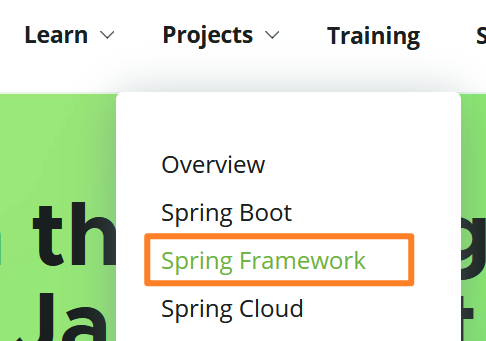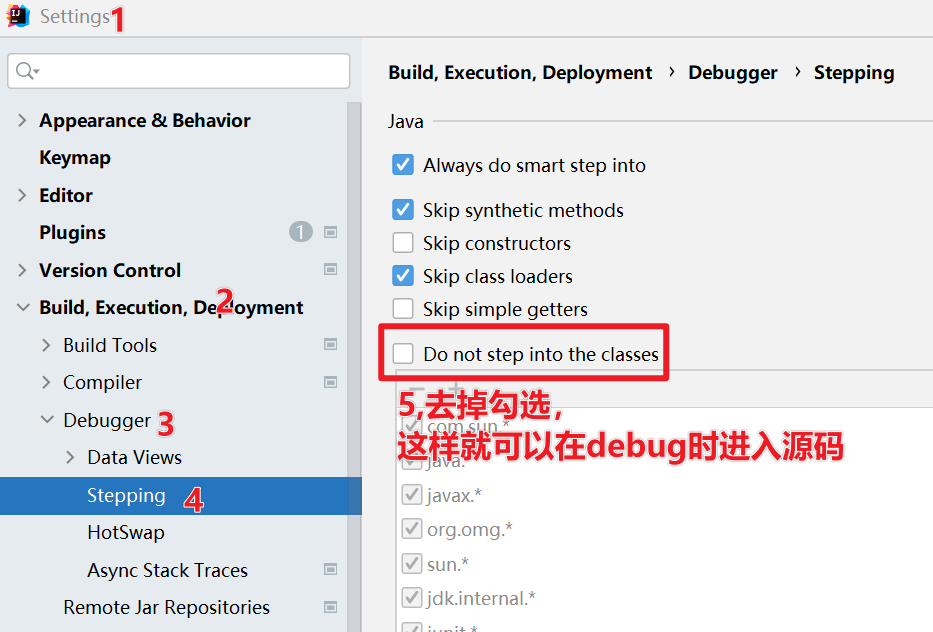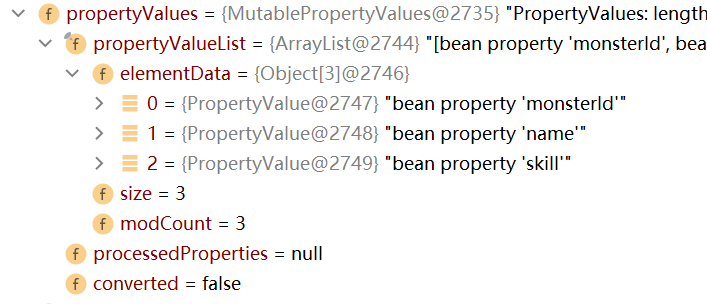day01-Spring基本介紹
Spring基本介紹
1.官方資料和下載
1.1Spring5下載
直接存取 https://repo.spring.io/ui/native/release/org/springframework/spring/,選擇相應版本即可
-
進入官網 https://spring.io/
-
進入Spring5

-
在beans.xml檔案中設定monster物件
<?xml version="1.0" encoding="UTF-8"?> <beans xmlns="http://www.springframework.org/schema/beans" xmlns:xsi="http://www.w3.org/2001/XMLSchema-instance" xsi:schemaLocation="http://www.springframework.org/schema/beans http://www.springframework.org/schema/beans/spring-beans.xsd"> <!-- 1. 設定monster物件/javabean 2. 在 beans標籤中可以設定多個bean 3. 一個bean就是一個Javabean物件 4. class屬性用於指定類的全路徑->spring底層反射要用 5. id屬性表示該java物件在spring容器中的id(將來在程式中通過id在容器中獲取相應物件,因此id是唯一的) 6. <property name="monsterId" value="100"/> 用於給該物件的屬性賦值,沒有的話就是預設值 --> <bean class="com.li.bean.Monster" id="monster01"> <property name="monsterId" value="100"/> <property name="name" value="牛魔王"/> <property name="skill" value="芭蕉扇"/> </bean> </beans> -
建立測試類SpringBeanTest
package com.li.test; import com.li.bean.Monster; import org.springframework.context.ApplicationContext; import org.springframework.context.support.ClassPathXmlApplicationContext; import org.testng.annotations.Test; /** * @author 李 * @version 1.0 */ public class SpringBeanTest { @Test public void getMonster() { // 1.建立容器 ApplicationContext // 2.這個容器是和組態檔關聯的。也就是說,將來可能會有多個容器,因為組態檔可能會有多個 ApplicationContext ioc = new ClassPathXmlApplicationContext("beans.xml"); // 3.通過getBean獲取對應的物件 // 預設返回的是Object型別(編譯型別),但是執行型別是Monster // Object monster01 = ioc.getBean("monster01"); Monster monster01 = (Monster) ioc.getBean("monster01");//這樣就可以在編譯時獲取物件屬性 //4.輸出 System.out.println("monster01=" + monster01 + " 執行型別=" + monster01.getClass()); System.out.println("monster01.id=" + monster01.getMonsterId() + " monster01.name=" + monster01.getName() + " monster01.skill=" + monster01.getSkill()); //5.相比於強轉,也可以直接在獲取的時候指定Class型別 Monster monster011 = ioc.getBean("monster01", Monster.class); System.out.println("monster011=" + monster011); System.out.println("monster011.name=" + monster011.getName()); System.out.println("ok~~~"); } }
4.4注意事項和細節
4.4.1類載入路徑
一個問題:為什麼下面可以讀取到beans.xml檔案?或者說,讀取的檔案是src目錄下的beans.xml嗎?
ApplicationContext ioc =new ClassPathXmlApplicationContext("beans.xml");
我們可以在測試類中輸出一下路徑:
//驗證類載入路徑
@Test
public void classPath() {
File file = new File(this.getClass().getResource("/").getPath());
System.out.println("file=" + file);
}
可以看到類的載入路徑並不在src目錄,而是在一個out目錄下:

可以看到在out\production\spring目錄下有一個beans.xml檔案:

當執行後,會將src目錄下編譯好的class檔案放到out目錄下。同時,將資原始檔(這裡指beans.xml)也放到out目錄,讀取的時候是按照out目錄來讀取的。
因此執行時,真正讀取的組態檔不是在src目錄下的beans.xml,而是在out目錄下的beans.xml,只是兩個檔案是一樣的。(類的載入路徑)
回到之前的問題,為什麼下面的語句,我們直接寫「beans.xml」?
ApplicationContext ioc =new ClassPathXmlApplicationContext("beans.xml");
因為預設讀取的是.....\out\production\spring目錄,而一旦執行過後,在src目錄下的beans.xml檔案會被直接放在.....\out\production\spring目錄下,因此可以直接讀取到。
假如beans.xml檔案是放到src下面的某個子資料夾,那麼在語句中就要根據子資料夾的結構來進行修改。
4.4.2spring容器的結構/機制
注意設定debugger,通過設定指定哪一些資料在debug的時候會展示,哪一些不展示

1.如下,打上斷點,點選debug

2.如下,beanFactory的beanDefinitionMap屬性的型別是ConcurrentHashMap集合,儲存beans.xml中的bean節點設定的bean物件的資訊
因為在我們的組態檔中,通常會有很多的java物件資訊,spring會把這些java物件的資訊儲存下來,以便將來spring建立物件時使用

3.展開beanDefinitionMap物件,可以看到一個table陣列(ConcurrentHashMap型別),初始的大小為512。Spring會將java物件的資訊放到table中。

4.index=127位置以ConcurrentHashMap$Node型別儲存Monster01物件資訊
其中key=「monster01」就是beans.xml中設定的bean的id
value存放了很多資料,例如:monster01物件的資訊(屬性,屬性值,類資訊,是否懶載入)

propertyValues就是記錄beans.xml中設定的monster01物件的屬性名和屬性值


5.此外beanFactory還有一個重要屬性singletonObjects,singletonObjects也是一個ConcurrentHashMap集合

....未完